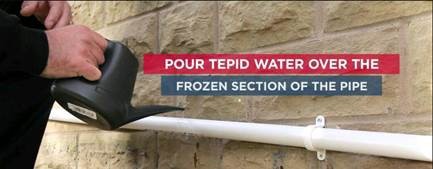Frozen plastic condensate discharge pipe from your gas or oil boiler
If you have a modern condensing gas or oil boiler that has stopped working it is likely to be down to a frozen external condensate discharge pipe. Below is some simple information that may help, if this is the case, without calling an engineer in the first instance.
A frozen condensate pipe is a common problem during winter. This is because the pipe runs outside your home, which means it risks getting frozen even if its insulated. The exposed parts of the pipe can freeze easily if exposed to extreme weather conditions.
When the pipe freezes, it will cause blockage to the boiler, as the moisture is not emitted. In turn, your boiler may shut down and you might experience no heat or hot water. For most models, an error code or an indication warning light may appear on the control panel.
How to thaw a frozen condensate pipe
Here are some useful tips on how to thaw a frozen condensate pipe that is not out of reach from ground level:
- Start by locating the frozen part or parts of the pipe. This will most likely occur in areas that the pipe is exposed to the weather. Try running your hand over the pipe and feel the temperature. If a part feels colder than the rest of the pipe, chances are, that part is frozen.
- Thaw the pipe carefully. Pour warm water over the frozen part of the pipe using a water jug or bottle. You can also use a hot water bottle or a heat pack to do this. Repeat the process until the pipe is thawed. Remember not to use boiling water. This can cause the pipe to crack and get damaged.
- Once the pipe is completely thawed, reset your boiler. Follow instructions from your manual to do this properly.



